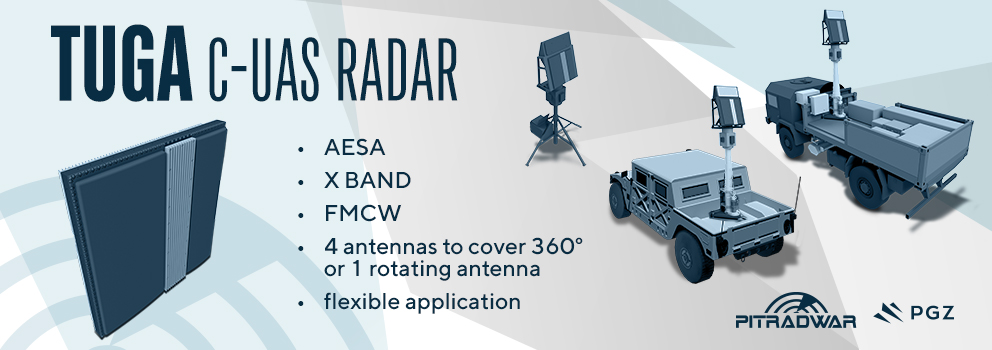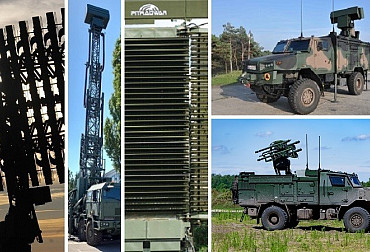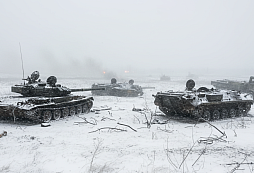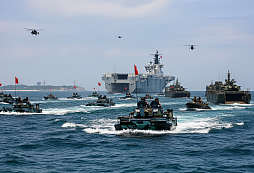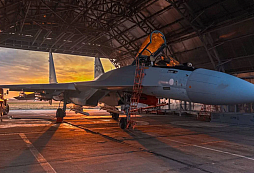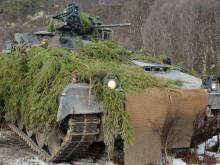Gripen E for the first time in the Czech Republic
The most modern E version of the Gripen fighter jet from the Swedish manufacturer Saab, which will be presented at the NATO Days this weekend, landed today at Ostrava airport. The Gripen E is designed and built to defeat any adversary. It has been developed for a forward-thinking air force – bringing the latest technology, systems, sensors, weapons and landing gear to ensure combat superiority and deliver air superiority in even the most challenging combat environments. Gripen E is the most advanced fighter aircraft Saab has to offer. It is an aircraft that, as with previous versions, reflects Sweden's experience as a country that must have its aircraft available at all times because of its close proximity to potential threats.
 Picture: The latest version of the Gripen E fighter jet from Swedish manufacturer Saab, which will be presented at NATO Days this weekend, landed at Ostrava Airport today. | Saab Technologies
Picture: The latest version of the Gripen E fighter jet from Swedish manufacturer Saab, which will be presented at NATO Days this weekend, landed at Ostrava Airport today. | Saab Technologies
"This is a multi-role fighter aircraft with high combat availability that is low maintenance, low operating costs and low on ground infrastructure. For example, it can land where other fighter aircraft cannot and operate from locations away from the home base if needed for any reason, such as roads, where it can land safely and refuel and reload weapons within 15 minutes and take off again for another mission," says Richard Smith, deputy director of Gripen sales at Saab.
Both the Gripen C/D, currently operated by the Czech Air Force, and the Gripen E were built to be very easy to operate and have high combat availability. Gripen fighters are not as maintenance intensive as other platforms and the life cycle costs are significantly lower. Similarly, the cost per flight hour is estimated to be up to 7 times lower than other aircraft offered to the Czech Republic.
 Picture: The latest version of the Gripen E fighter jet from Swedish manufacturer Saab, which will be presented at NATO Days this weekend, landed at Ostrava airport today. | Saab Technologies
Picture: The latest version of the Gripen E fighter jet from Swedish manufacturer Saab, which will be presented at NATO Days this weekend, landed at Ostrava airport today. | Saab Technologies
The new AESA radar, passive infrared search and track system (IRST), highly advanced electronic warfare systems with spherical coverage and communications make the Gripen E a fighter packed with the latest technology. The Gripen E is able to evade detection by radar systems by suppressing enemy radar detection capabilities. Sophisticated electronic warfare systems, similar to an electronic shield, allow the Gripen E to disrupt the aircraft's ability to effectively locate. This feature can be used either to destroy enemy targets or to reduce the enemy's ability to act. In other words, the Gripen E does not even need maintenance-intensive and therefore expensive stealth technology.
With Gripen E it is also very easy to react to constantly accelerating technological developments. The Gripen E's unique avionics architecture allows software updates to be made within hours, giving the user a constantly upgraded machine. With this approach, Gripen E completely overcomes the previous system of different generations of aircraft.
"The Air Force operating Gripen E can thus have the most up-to-date version of the machine available at all times without the need for long downtimes as in the case of extensive upgrades. It also allows us to achieve high levels of combat readiness," says Smith.
The Gripen E is powered by the powerful and highly reliable GE F414G engine, which gives the aircraft a long range. A significant advantage is the ability to carry an impressive weapons payload thanks to its ten hangers. The operator can equip the Gripen E with weapon systems from a wide range of global suppliers, rather than being reliant on purchases from the aircraft's country of origin. "This gives Gripen customers a great deal of flexibility when purchasing weapon systems, both economically and geopolitically," Smith concludes.
In 2027, when the Czech Republic's current Gripen contract expires, there is still a substantial portion of the Gripen C/D platforms' service life remaining, so the upgrade potential is still very strong – including new sensors and weapons. The Gripen C/D will continue to be a highly capable fighter aircraft meeting all the requirements of the Czech Air Force until at least 2040. The new generation of Gripen E could then be seamlessly introduced into the Czech Air Force's armament without major additional infrastructure costs and easily meet all the needs of the Czech Air Force until 2070.
